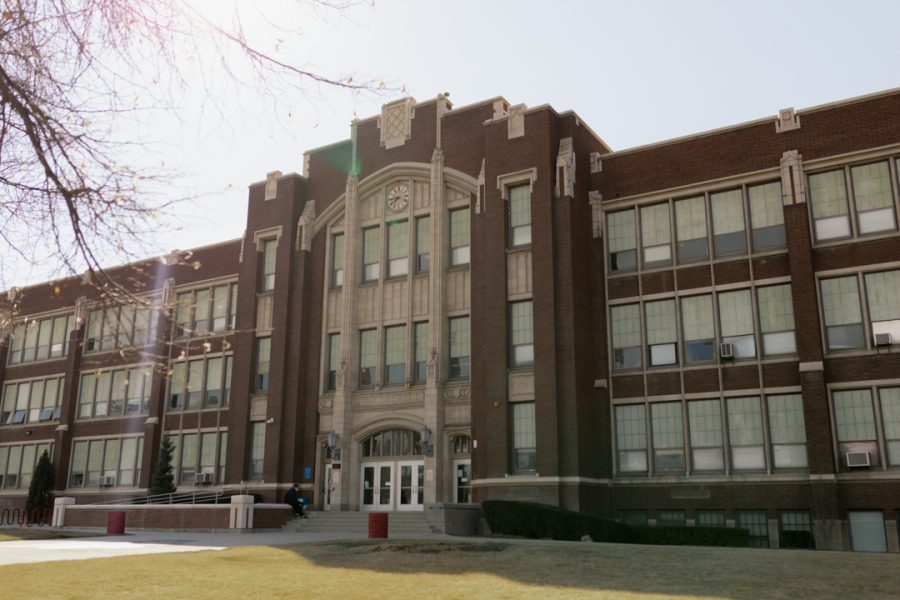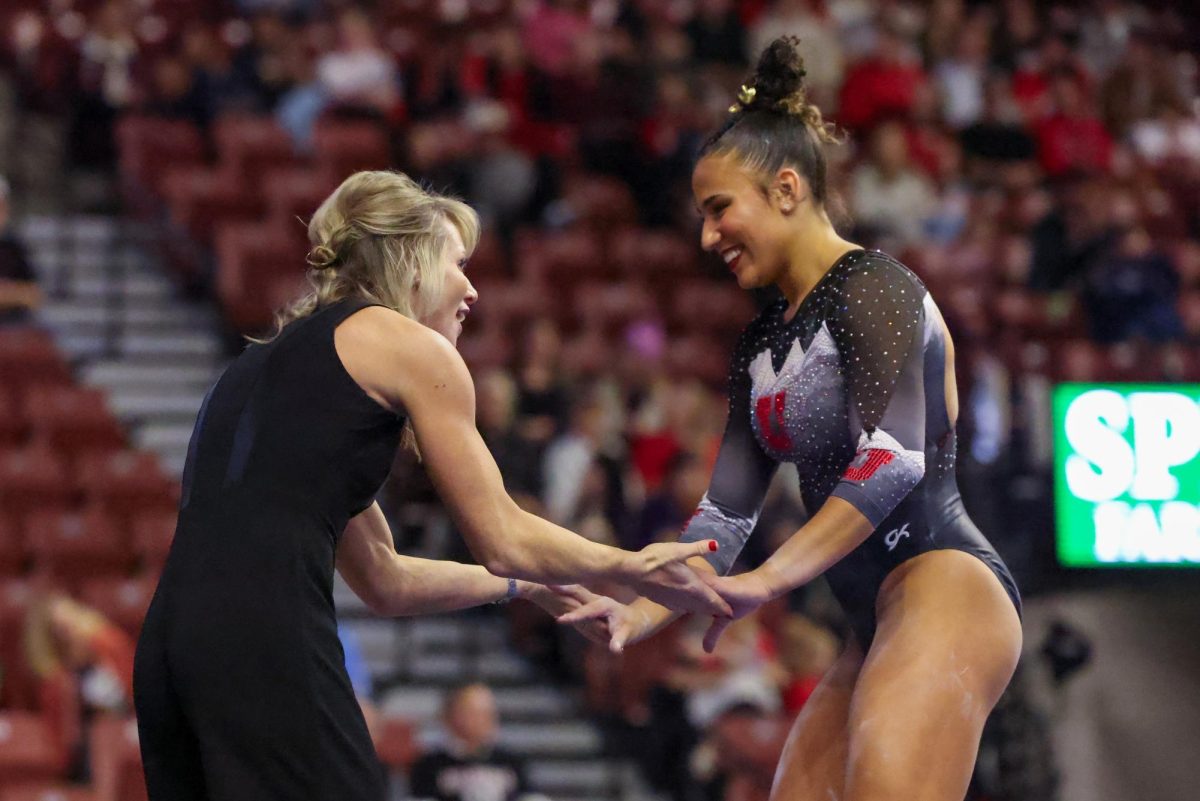Alexander & Soter: Youth Deserve A Say in Their Future
West High School Thursday afternoon in Salt Lake City (Photo by Maya Fraser | Daily Utah Chronicle)
March 10, 2021
This last year has been nothing if not remarkable — 2020 survivors bore witness to a deadly worldwide pandemic, a jaw-dropping siege on American democracy and a tragic economic recession, with the list going on and on. But as the saying goes, every cloud has a silver lining. Ours just might be the most remarkable part of all. Since the beginning of 2018 and well into 2020, student activism has soared all across the country. Newspapers, social media feeds and streets leading up to capital buildings nationwide have been bombarded with youth demands for a revolution. Building up from 2013’s Black Lives Matter movement to Greta Thunberg’s Climate Change Awareness protests to March for our Lives, young people are changing our world for the better. So, it’s really no surprise that they’d ask for some credit for their triumphs. Utah legislators had the opportunity to give it to them through H.B. 338, which could have been incredibly valuable in expanding student involvement and future change.
The bill, also known as “School District Voter Eligibility Amendments,” was one of the few significant bipartisan pieces of legislation that lawmakers wrote up for the 2021 general session. Sponsored by Rep. Joel K. Briscoe, the bill would have given 16- and 17-year-old students the opportunity to vote in their local school board elections — the election that arguably affects high school students the most. With the potential to be incredibly beneficial to current high school students — who currently have to wait to graduate from high school to vote in their local school board elections — H.B. 338 would have given school districts the option of providing this service to students by holding elections within individual school districts.
That alone is good enough for it to be passed. But it’s also important because it was thought of and partially drafted by Arundhati Oomen, a junior at West High School. Oomen has been a non-voting member of the Salt Lake City school board since the spring of last year. She asked for the full board’s support of the bill in late November. Oomen is not the only student who wants to vote for the issues that directly affect her in her local school board elections. Another Utah student, Sierra Rose, said of the bill, “I have bones to pick with very specific candidates every year, especially the ones who have only been involved in business and other politics instead of actual education. So I’d be very happy to weed them out.” Unfortunately, no Utah high school student will be able to vote in the coming school board elections because H.B. 338 failed to pass the 2021 General Legislative Session.
Oomen’s initiative to increase student involvement is incredibly admirable and is a case study in young people’s collective initiative. For the past few years, and most notably last year, Gen Z led the protests and shaped social media campaigns combating police brutality. Before then, Thunberg shook the world with her age and advocacy against climate change and carbon emissions. Even gun control debates were reignited following the shooting at Stoneman Douglas High School, where student activists created March for Our Lives.
Throughout America’s history, students have been at the forefront of change. Young people pushed for the 26th amendment, saying that if they were old enough to fight, they were old enough to make decisions for themselves and have a say in their nation. During the Civil Rights Movement, students were some of the most influential activists for desegregation. Students were the ones marching, protesting and demonstrating the power of their youth. Students were the ones enduring often brutal treatment for their sit-ins. Throughout our nation’s past, students have been instrumental in making their voices heard and enacting change. Whether it’s local school boards, their own cities and towns or the U.S. military, young people want to vote in decisions when those very decisions impact their lives.
As modern issues of society gain more traction, so have the levels of student activism. 16- to 17-year-olds have proven that their involvement is far-reaching and that they are ready to face obstacles in their future. If they were given the right to vote in their local school board elections, these young people would have been able to exercise their voices through the voting process, prepare themselves for involvement in future local affairs and adopt the mentality of habitual voting. The weight of voting would have resonated deep within this generation, and through the years, increased voter turnout in national elections — something that has been lacking these past couple of years with older generations. If H.B. 338 passed, we could have had a new generation of deeply informed voters spearheading the future of the United States in an incredible direction.
It’s time we start recognizing and encouraging the contributions of student activism in our world’s pressing matters, especially in matters that directly affect students. Young people have demonstrated time and time again their unwavering resolve, and dismissing their claims and urgent calls for change will only hinder our ability to move forward as a nation. We need to introduce voter engagement at the student level, even if just for local issues such as school board elections. Student voters will understand the impact of their vote, continue voting in elections throughout their lives and represent themselves accurately as the largest stakeholder in school districts.









